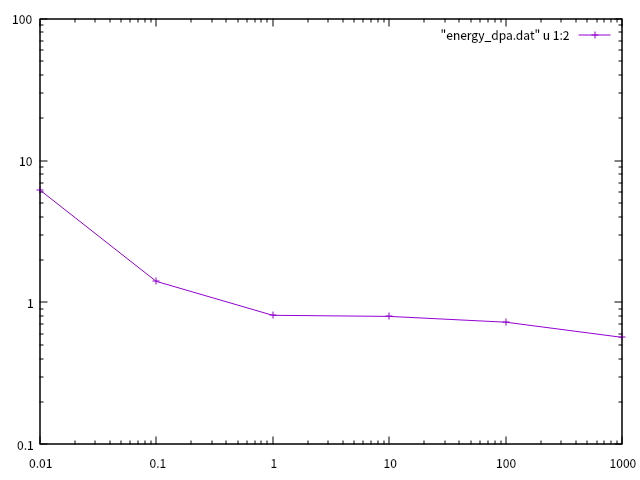Dear experts,
I am a new user and want to use fluka to calculate dpa. I am trying to reproduce results from several literatures for exercise. But the results of dpa calculated by me are all 1/2 lower than that in the literatures.
The first dpa calculations that I tried to reproduce is the blue line of Fig. 2(d) in paper
2014 Simulation of beam induced lattice defects of diamond detectors using FLUKA.pdf (688.0 KB)
. This case is the proton irradiating silicon of size 1x1x0.04 cm^3. My input file is
Si_Guthoff2014.inp (1.4 KB)
. The results of my calculation are as follows.

The dpa of every momentum seems to be 1/2 lower than that in the literature.
The second dpa calculations that I tried to reproduce is the middle red line of Fig. 1 in paper
2016 Comparative Study of Radiation damage in Si, Ge and Diamond used as Detector.pdf (572.7 KB). This case is the proton irradiating silicon of size 1x1x0.03 cm^3. My inputfile is
Si_Kumar2016.inp (1.3 KB). The results of my calculation is as follows.

The dpa of every energy seems also to be 1/2 lower than that in the literature.
The third dpa that I tried to reproduce is the peak dpa (0.4) of Fig. 1 in paper
2013 On thermal and radiation damage to silicon crystals in the LHC proton beam.pdf (1.3 MB). This case is the proton with momentum 450 GeV/c irradiating silicon of size 0.1x1x5 cm^3. My inputfile is
Si_Smirnov2013.inp (1.3 KB). The peak dpa calculated by me is 0.22.
I wonder if there is some common mistake in my inputfile. Could someone help to have a look at my inputfile?
Best wishes!
Jiangyan Li